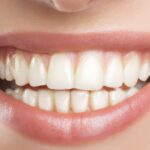When you are looking to train as a dentist, there is a lot to take in during those first few months. More specifically, you will need to learn all about the different equipment that you will need to use when you qualify as a dentist.
One of the most important pieces of equipment to familiarise yourself with is a dental bur. Burs are used by dental teams to cut, shape, polish, and remove sections of teeth, usually using fillings, crown fittings, and even extractions. There is more than one type, though, and here, you will be introduced to the different bur types you will learn to use in your dental training. There are a few!
Round Burs
This is one of the widest range of dental burs. The first is the RA or right-angle bur, which is used for polishing or finishing teeth (usually after a filling) and is suited for slow handpieces. Next is an FG or friction grip bur, which is best used when cutting or shaping teeth, and is used with high-speed handpieces. There is then the HP or latch-type handpiece, which is ideal for shaping and cutting teeth and is suited for slow handpieces.
Tapered Fissure Burs
A tapered fissure bur is typically used by dental teams for tooth preparation and will create cavities in the enamel and dentin. They are used when a dentist wants to create space for a filling or even a root canal.
Round-End Taper Burs
These are also known as round-end taper crosscut buts, which are used to remove minimum amounts of enamel when making cavities in the tooth. These are used for refining the cavity walls in a tooth without removing too much enamel.
Pear-Shaped Burs
If you need to prepare a tooth for a crown or to access a pulp chamber for a root canal, then you will probably need to use a pear-shaped bur. In both cases, it is often best to use this with a slow handpiece.
Inverted Cone Bur
This is ideal for creating features in a crown during the prep stage, such as retentive features, as well as reducing occlusal parts of the teeth.
Straight Fissure Burs
These are great for initial tooth reduction, in particular when you are trying to access cavities that are in tough-to-reach spots.
Diamond Burs
These come in an array of shapes, such as a wheel, a flame, or round, and the exterior is coated with industrial diamonds. These can shape materials that are used on teeth, like ceramic fillings, veneers, or crowns.
Carbide Burs
This bur is made from tungsten carbide and will be used by dentists who are looking to cut tooth structure as well as shape crowns. They can also be used for shaping teeth.
Finishing Bur
As the name suggests, this is used when you are looking to smooth down a filling or crown after the initial restoration has been fitted. Great for preventing plaque build-up and can be used to clean pre-existing fillings.
Specialty Burs
These are used for specific procedures, such as removing damaged crowns, for surgical procedures, and even prepping the mouth for oral implants.
Composite Burs
If you are using composite resins when you are bonding a tooth, fitting veneers, or placing a porcelain filling or crown, then a composite bur is the best option. Usually, these are used in cosmetic dental care but can be used for shaping standard fillings.
Orthodontic Burs
These are only used by orthodontists to reduce enamel and help with more accurate bracket placement.




